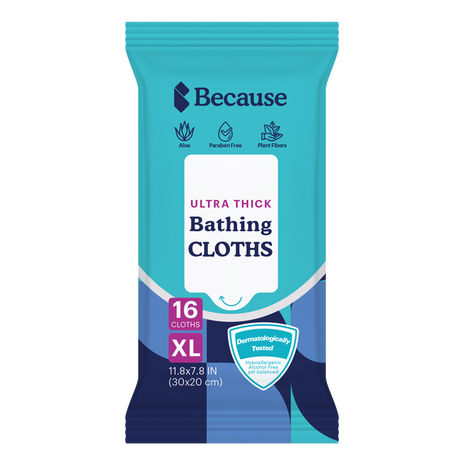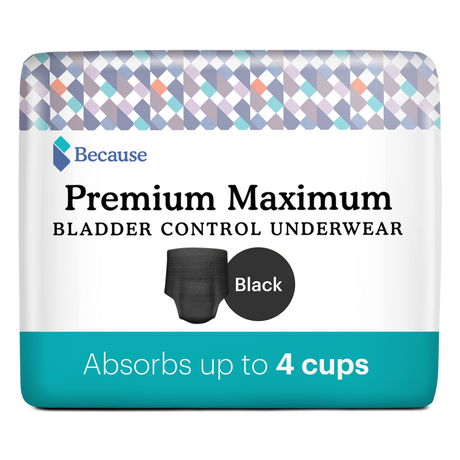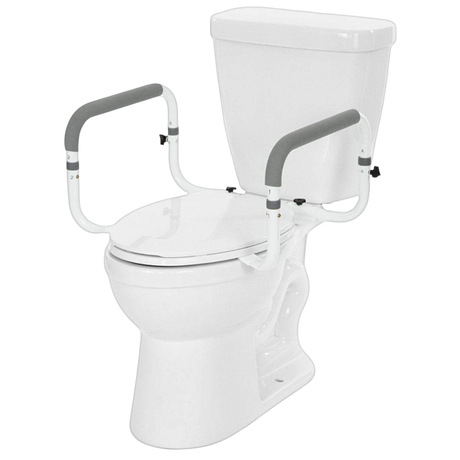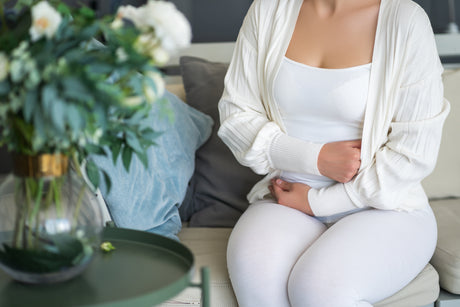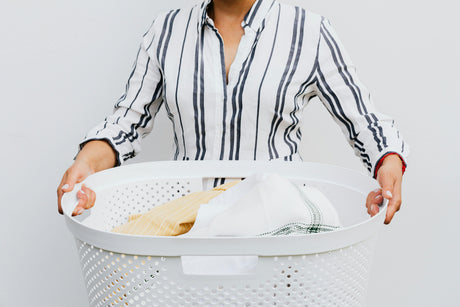Urinary incontinence is a medical condition when you accidentally leak urine. As embarrassing and frustrating as urinary incontinence might feel, you are not alone. In fact, most people do not realize that urinary incontinence is very common.
Here are statistics about urinary incontinence that might surprise you:
General statistics:
- Urinary incontinence affects about 423 million people around the world (20 years or older)
- A survey conducted from 2015-2018 found that 61.8% of women have experienced urinary incontinence
- As of 2018, urinary incontinence has increased in women by 12% since 2004
- If you are a woman over 60, you may be one of 9-39% of women experiencing daily urinary incontinence
- In men over 40, about 17% have experienced urinary incontinence
- Urinary incontinence affects up to 34% of older men
- Up to 11% of older men experience daily urinary incontinence
- In nursing homes, 53% of the elderly experience incontinence
- Stress urinary incontinence affects 24-45% of women over 30
- In adults over 75, urge urinary incontinence affects 31% of women and 42% of men
- Overflow urinary incontinence affects 5% of people with chronic incontinence
Incontinence Statistics in Women
Urinary incontinence prevalence by age - US women:
- Ages 50-64: 43%
- Ages 65-80: 51%
Breakdown of Incontinence in Women by Ethnicity
The following graph illustrates the comparative frequencies of urinary incontinence among White, Hispanic, Black, and Asian-American women.
The graph below presents a detailed look at the severity of urinary incontinence among women, with comparisons across White, Hispanic, Black, and Asian-American ethnicities.
Type of Incontinence in Women:
- Stress UI: 37.5%
- Urge UI: 22.0%
- Mixed UI: 31.3%
- Unspecified UI: 9.2%
Effect of caffeine on incontinence in women:
Incontinence Statistics in Men
Urinary incontinence prevalence by age – US Men
- 19-44: 4.81%
- 45-64: 11.2%
- 65-79: 21.1%
- 80+: 32.17%
Type of Incontinence in Men:
- Mixed Urinary Incontinence (10.3%)
- Stress UI only (7.7%)
- Urge UI only (6.9%)
Estimated market value of Adult Diapers in North America (2014-2025)
You may think there aren’t sleek, discrete solutions for urinary incontinence, but we have you covered.
Before we get into some ways to prevent and manage this condition, let’s start with finding out why you might be experiencing urinary incontinence.
What Causes Urinary Incontinence?
So, what is urinary incontinence? And what causes it? A 2022 article found that women are most likely to develop urinary incontinence if they are (1) greater than 70 years old, (2) have a body mass index of >40, or (3) gave birth vaginally at any time in their life.
There are 5 types of urinary incontinence, according to a 2023 report:
- Stress urinary incontinence happens when increases in your abdominal pressure (like when you laugh, sneeze, or exercise) cause you accidentally pee or leak urine – stress urinary incontinence typically occurs without warning. It is caused by weakness of the urethral sphincter and/or pelvic floor. If you are pregnant or have had a child, you are more likely to experience stress urinary incontinence.
- Urge urinary incontinence happens when you feel a sudden urgent need to pee that is quickly followed by accidentally peeing or leaking urine. Urge urinary incontinence is caused by bladder irritation or when the brain loses control of the bladder (also called loss of neurological control). Loss of neurological control can cause the bladder to accidentally contract. This may sometimes be called a neurogenic bladder.
- Mixed urinary incontinence happens when you experience both stress and urge urinary incontinence (at different times). Mixed urinary incontinence occurs when you have both symptoms of stress urinary incontinence (weakness of the urethral sphincter or pelvic floor) and urge urinary incontinence (bladder irritation or neurogenic bladder).
- Overflow urinary incontinence happens when the bladder is overfilled and begins to leak urine. Overflow urinary incontinence occurs when smooth muscles (the detrusor muscles) in the bladder involuntarily contract. Overflow urinary incontinence could also be caused when the bladder has experienced obstructions. Overflow urinary incontinence is caused (1) by neurological problems like multiple sclerosis or spinal cord injuries (another possibility of neurogenic bladder), (2) diabetes effects on detrusor muscles, and/or (3) external compression by ab or pelvic masses. Prostatic hyperplasia is also known to be a cause.
- Functional urinary incontinence happens when environmental or physical factors prevent you from reaching a bathroom, often called “toileting difficulty.” Functional urinary incontinence is caused by physical disability (that affect the ability to move around) or neurological impairments (like the inability to communicate)
You are also at an increased risk of developing urinary incontinence if you are:
- A woman – stress incontinence is more likely, especially if you were pregnant, gave birth vaginally, or have reached menopause
- A man with a high risk of developing prostate gland problems
- Getting older and require ever-evolving needs
- Overweight
- A person with a family history of urinary incontinence – the Mayo Clinic states this is especially common with urge incontinence
- Diabetic
When Could Urinary Incontinence Happen?
If you experience urinary incontinence, you probably worry about when urinary incontinence could occur. Nearly half of women experiencing incontinence worry about symptoms becoming worse as they grow older.
A report from the University of Michigan stated that in women aged 50-80, there are four main situations where urinary incontinence can occur. Women who experience urinary incontinence often experience it when they:
- Sneeze or cough – 79%
- Are trying to get to a bathroom – 64%
- Laugh – 49%
- Exercise – 37%
Most of these women (41%) describe this as a major problem or somewhat of a problem, and 31% of women in this study experienced urinary incontinence daily.
According to this report, only 34% of women spoke to their doctor about urinary incontinence solutions. Most women don’t talk to their doctor because they feel embarrassed, while 22% actually do not see urinary incontinence as a health problem.
How Do You Prevent Urinary Incontinence?
You can prevent urinary incontinence by performing specific daily activities. However, urinary incontinence might not be able to be prevented if you have a medical problem that causes problems with your brain or body.
To prevent urinary incontinence with daily activities, the Mayo Clinic recommends that you:
- Regularly perform pelvic floor exercises
- Control your weight (attempt to keep BMI under 25)
- Eat more fiber – constipation can cause urinary incontinence, and fiber helps prevent constipation
- Avoid or quit smoking
- Eat less acidic or spicy foods
- Drink less caffeine and alcohol
Eating healthy is a key path towards preventing urinary incontinence because it can prevent obesity and diabetes. However, according to the National Institute of Diabetes and Digestive and Kidney Diseases (NIDDK), it does not appear that there are any direct links that show healthy eating causes urinary incontinence to become better or worse.
Changing your bathroom habits might help ease urinary incontinence. The NIDDK states that holding urine can strain your bladder muscles, which can wear them out over time. Holding your urine in can also increase your risk of developing a bladder infection, which also can cause urinary incontinence.
How Do You Manage Urinary Incontinence?
It might be hard to find thoughtful, modern, and practical solutions to urinary incontinence, but there are plenty of ways to manage it. You deserve to feel like you’re living your best life, and we are dedicated to providing you with the information you need to achieve that goal.
If you have urinary incontinence, using all the preventative methods listed above will help manage your urinary incontinence.
A key way to manage urinary incontinence is performing pelvic floor muscle exercises daily, which have historically also been called Kegel exercises. The NIDDK recommends performing pelvic floor muscle exercises for urinary incontinence because it can make your bladder muscles stronger and prevent urine leaks when you exercise, cough, laugh, or sneeze. Many people think that pelvic floor muscle exercises are just for women, but both men and women should perform pelvic floor muscle exercises to help manage urinary incontinence.
But how do most people manage urinary incontinence? According to one study:
- 59% use pads or adult diapers
- 38% perform pelvic floor exercises
- 16% reduce their fluid intake
- 15% modify their clothes so they can hide incontinence events
When you have urinary incontinence, you might worry about how to avoid incontinence in public.
Some ways you can deal with incontinence or reduce the chance of feeling embarrassed from incontinence in public include:
- Use the bathroom right before you leave home
- Bring a change of clothes and cleanup items when you leave home
- Identify where public restrooms are before you need one
- Wear disposable underwear (also called adult diapers)
If you do experience urinary incontinence often, be sure to keep your skin clean. Cleansers and creams that contain zinc oxide, lanolin, or petrolatum (like Drapolene® Cream) can prevent your urethra from becoming irritated.
Talking with your physician is an important step in treating urinary incontinence. According to the National Kidney Foundation, nearly 90% of people with incontinence don’t seek help.
Finding emotional support to help with these problems is helpful, and the people you talk with are likely to help support you and make it easier to manage your urinary incontinence. You might find that other friends or loved ones suffer from incontinence too.
Dehydration and Incontinence
If you have urinary incontinence and wonder about how much water you should drink, you might ask yourself many questions like:
- Can drinking more water help with incontinence?
- Should I drink less water to help with incontinence?
- Or, what is the best drink for incontinence?
Drinking the right amount of water is essential for supporting a healthy bladder and reducing your risk of having an accident. The National Association for Continence recommends drinking 8oz of water 6-8 times a day. Water is the best drink to consume if you have urinary incontinence because caffeinated, sugary, carbonated, or alcoholic beverages can irritate the bladder.
How Do You Medically Treat Urinary Incontinence?
If changing your lifestyle has failed to solve urinary incontinence, there are medical treatments that can help treat urinary incontinence.
The NIDDK states that certain medications may be a solution for urinary incontinence. These include anticholinergics, beta-3 agonists, and tricyclic antidepressants. Some common names of incontinence medications are solifenacin, tolterodine, darifenacin, fesoterodine, trospium, mirabegron, oxybutynin, and duloxetine. In men with enlarged prostates, medications to help treat urinary incontinence include alpha-blockers, 5-alpha reductase inhibitors, and phosphodiesterase-5 inhibitors.
Botox is another, lesser known treatment for urinary incontinence. Botox can be injected into your bladder to help it relax, which makes more room for urine and reduces the risk of urine leaks.
There are also simple medical devices that help treat urinary incontinence. These include catheters and pessaries.
Electric nerve stimulation may help treat urinary incontinence by changing your bladder’s reflexes. Electrical pulses can stimulate the nerves controlling your bladder and urinary sphincter.
In the worst case scenario, surgeries can be used to treat urinary incontinence. Sling surgery is the most common urinary incontinence surgery for women, and it can also be used for men. This involves using a strip of material, like mesh, to support weak tissue or the sphincter muscles.
In men, artificial urinary sphincters might be used to aid with keeping the urethra closed. In men with an enlarged prostate, bladder outlet obstructions can occur and may require surgery to remove enlarged tissue.
If you or a loved one experience urinary incontinence, have hope. You don’t have to feel embarrassed by it. There are many ways to manage or treat urinary incontinence, and having open, vulnerable conversations with your loved ones or doctors can help you find solutions for urinary incontinence.
FAQs About Urinary Incontinence
What are the first signs of incontinence?
The initial signs of urinary incontinence often include experiencing leaks during activities such as coughing, sneezing, or laughing. Frequent urges to urinate, especially at night, and difficulty in controlling the bladder are also common indicators.What are the types of incontinence?
There are several types of urinary incontinence, including stress incontinence, urge incontinence, overflow incontinence, functional incontinence, and mixed incontinence. Each type has distinct causes and symptoms.What is the average age for bladder leakage?
Bladder leakage can occur at any age but becomes more common as individuals age. However, it's essential to note that bladder leakage isn't exclusive to older adults and can affect people of all ages.Why do I pee my pants without warning?
Accidental urine leakage can occur due to various factors such as weakened pelvic floor muscles, nerve damage, urinary tract infections, or certain medications. Seeking medical advice can help determine the underlying cause and appropriate treatment.Is sudden incontinence an emergency?
Sudden onset of urinary incontinence may not always be an emergency but should be evaluated by a healthcare professional, especially if it's accompanied by other concerning symptoms like pain or blood in the urine.Can anxiety make you pee yourself?
Yes, anxiety can exacerbate urinary incontinence in some individuals by triggering overactive bladder muscles or increasing pressure on the bladder. Managing stress and anxiety through relaxation techniques or therapy may help alleviate symptoms.What mental illness causes incontinence?
Various neurological conditions, such as dementia, Alzheimer's disease, and certain neurological disorders, can contribute to urinary incontinence due to impaired bladder control and cognitive function.How do you know if you have stress incontinence?
Stress incontinence is characterized by leaks occurring during physical activities that put pressure on the bladder, such as coughing, sneezing, or lifting heavy objects. Consulting a healthcare professional for diagnosis is recommended.What vitamins help incontinence?
Certain vitamins and supplements, such as vitamin D, vitamin C, and magnesium, may support bladder health and function. Supplements with pumpkin seed oil may also improve overactive bladders, according to a key 2014 study. However, it's crucial to consult with a healthcare provider before starting any new supplements.Does drinking more water help incontinence?
While staying hydrated is essential for overall health, excessive fluid intake can worsen urinary incontinence in some cases. Recommendations for fluid intake in people with urinary conditions are the same as healthy individuals - aim for 8, 8oz cups of water a day. It's advisable to maintain a balanced fluid intake and avoid consuming large amounts of caffeine or alcohol, which can irritate the bladder.Which are the 2 most common causes of incontinence?
The two most common causes of urinary incontinence are weakened pelvic floor muscles, often due to childbirth or aging, and overactive bladder muscles, which can result from nerve damage or medical conditions.Does diabetes cause incontinence?
Diabetes can contribute to urinary incontinence by damaging nerves that control bladder function. Proper management of blood sugar levels and regular medical check-ups are crucial for individuals with diabetes to help prevent or manage urinary symptoms.Can incontinence be avoided?
While some risk factors for urinary incontinence, such as age and genetics, cannot be changed, adopting healthy lifestyle habits such as maintaining a healthy weight, practicing pelvic floor exercises, and avoiding smoking can help reduce the risk of developing incontinence.Is incontinence embarrassing?
Urinary incontinence can be embarrassing for many individuals due to its impact on daily activities and self-esteem. However, it's essential to remember that it's a common medical condition and seeking support from healthcare professionals and loved ones can help manage and cope with the symptoms effectively.How do you prevent accidental urinary incontinence episodes?
Treatment options for urinary incontinence vary depending on the underlying cause and severity of symptoms. Pelvic floor exercises (Kegels), bladder training, medications, and in some cases, surgery may be recommended to help manage or alleviate urinary leakage.Are there other side effects of urinary incontinence?
In addition to the physical discomfort and inconvenience, urinary incontinence can lead to skin irritation, emotional distress, social isolation, and decreased quality of life if left untreated. Seeking timely medical intervention can help address these potential side effects.Does urinary incontinence lead to more UTIs?
Yes, urinary incontinence can increase the risk of urinary tract infections (UTIs) due to incomplete bladder emptying and prolonged exposure of the urinary tract to bacteria. Maintaining good hygiene practices and promptly addressing urinary symptoms can help reduce the likelihood of UTIs.How do you go out in public with incontinence?
Managing urinary incontinence in public settings may involve wearing absorbent pads or undergarments, planning restroom breaks, and carrying spare clothing or supplies. It can also be helpful to identify restroom locations in advance and communicate needs with trusted companions or caregivers.How do you prevent bladder leaks in public?
To minimize bladder leaks in public, practicing pelvic floor exercises regularly, avoiding bladder irritants such as caffeine and alcohol, and maintaining a healthy weight can be beneficial. Additionally, wearing protective undergarments or using bladder control products can provide added security.What should you not do if you have incontinence?
If you have urinary incontinence, it's essential to avoid habits or activities that can exacerbate symptoms, such as consuming excessive caffeine or alcohol, smoking, holding urine for extended periods, or ignoring the urge to urinate.Is urinary incontinence considered a disability?
While urinary incontinence can significantly impact daily functioning and quality of life, whether it qualifies as a disability depends on individual circumstances and the severity of symptoms. Seeking guidance from healthcare providers and legal experts can provide clarity on disability eligibility and available support options. Incontinence products like absorption pads, leak proof underwear, and even underwear liners may be FSA or HSA deductible.References
- Tran LN, Puckett Y. Urinary Incontinence. [Updated 2023 Aug 8]. In: StatPearls [Internet]. Treasure Island (FL): StatPearls Publishing; 2024 Jan-. Available from: https://www.ncbi.nlm.nih.gov/books/NBK559095/#
- Patel, U. J., Godecker, A. L., Giles, D. L., & Brown, H. W. (2022). Updated Prevalence of Urinary Incontinence in Women: 2015-2018 National Population-Based Survey Data. Female pelvic medicine & reconstructive surgery, 28(4), 181–187. https://doi.org/10.1097/SPV.0000000000001127
- Cheng, M. C., Liu, S. P., Chuang, Y. C., Hsu, K. C. P., & Chow, P. M. (2022). Prevalence and impacts of male urinary incontinence on quality of life, mental health, work limitation, and health care seeking in China, Taiwan, and South Korea (LUTS Asia): Results from a cross-sectional, population-based study. Investigative and clinical urology, 63(1), 71–82. https://doi.org/10.4111/icu.20210259
- Milsom, I., Coyne, K. S., Nicholson, S., Kvasz, M., Chen, C. I., & Wein, A. J. (2014). Global prevalence and economic burden of urgency urinary incontinence: a systematic review. European urology, 65(1), 79–95. https://doi.org/10.1016/j.eururo.2013.08.031
- Gleason, JL, Richter, HE, Redden, DT, Goode, PS, Burgio, KL, & Markland, AD. (2012). Caffeine and urinary incontinence in US women. International Urogynecology Journal, 24, 295-302. https://pubmed.ncbi.nlm.nih.gov/22699886/
- Nishimura, M., Ohkawara, T., Sato, H., Takeda, H., & Nishihira, J. (2014). Pumpkin Seed Oil Extracted From Cucurbita maxima Improves Urinary Disorder in Human Overactive Bladder. Journal of traditional and complementary medicine, 4(1), 72–74. https://doi.org/10.4103/2225-4110.124355
- Source: Gleason, JL, Richter, HE, Redden, DT, Goode, PS, Burgio, KL, & Markland, AD. (2012). Caffeine and urinary incontinence in US women. International Urogynecology Journal, 24, 295-302. https://pubmed.ncbi.nlm.nih.gov/22699886/

